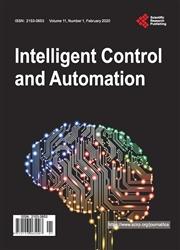改善仿人机器人与老年人通信的仿人机器人对话优化
引用次数: 14
摘要
在日本,老年痴呆症患者正在增加。正因为如此,“通信机器人”被引入护理环境,以取代护士和其他护理人员的短缺。我们的研究小组目前正在开发一种具有护理功能的人形护理机器人(HNR),专门用于老年痴呆症患者的功能和实际使用。本研究的目的是澄清人形机器人(Pepper) (SoftBank Robotics)对话模式当前功能的改进点,以改善人形机器人与老年人之间的最佳沟通。在人形机器人Pepper中安装了对话程序,包括日本Xing公司的应用程序Pepper- Prevention Gymnastics Exercises (Pepper- cpge)。老年人和Pepper-CPGE之间的对话被摄像机记录下来。从视频和现场记录中捕获的对话转录数据进行了分析,重点是人机交互。从录制的场景和对话来看,Pepper-CPGE的语音语调与老年人期望的不一致,导致老年人的反应不恰当;2) Pepper的问题与老年人的回答时间不及时、不匹配(问答时间的差异),导致老年人的困惑;3)周围的其他老年人对与Pepper-CPGE的对话感兴趣。然而,Pepper-CPGE不能与多个老年人交流。提高Pepper-CPGE与多个老年人交流的能力,因为一个老年人与Pepper-CPGE的对话可以使其他老年人不仅与Pepper-CPGE互动的老年人互动,而且与Pepper-CPGE互动。这项研究表明,人形机器人和老年人之间的互动关系可以得到促进。需要通过优化结构化对话来改善人形机器人与老年人之间的沟通,以增强适当的参与和参与。有必要为hnr创建一个“关怀对话数据库”,以便了解患者/客户并分享人机交互的美学体验。此外,开发一种使人形机器人能够同情老年人的对话模式也很重要。本文章由计算机程序翻译,如有差异,请以英文原文为准。
The Optimization of Humanoid Robot’s Dialog in Improving Communication between Humanoid Robot and Older Adults
Older adults with dementia are increasing in Japan. Because of this, “communication robots” are being introduced into nursing settings to substitute for the shortage of nurses and other care workers. Our research group is currently developing a humanoid nursing robot with caring function (HNR), specifically for the functional and practical use of older adults with dementia. The purpose of this study was to clarify improvement points of the current function of humanoid robot’s (Pepper) (SoftBank Robotics) dialog pattern for improving optimal communication between humanoid robot and older adults. Dialog programs were installed in the humanoid robot Pepper, including the application program Care Prevention Gymnastics Exercises for Pepper (Pepper-CPGE) that was made by Xing Company, Japan. Dialogues between older adults and Pepper-CPGE were recorded by video camera. Data from transcriptions of the conversations captured from video and from field notes were analyzed focusing on human-robot interaction. From the recorded scenes and conversations, the following were points to be improved: 1) Intonation of the words vocalized by Pepper-CPGE was different from that expected by the older adult resulted in inappropriate responses by the older adult; 2) The timing between Pepper’s questions and the responses of the older adult were not timely and did not match (differences in the question-response time), which lead to confusion among the older adults; and 3) Other surroundings older adults were interested in the dialogue with Pepper-CPGE. However, Pepper-CPGE cannot communicate with multiple older adults. ImprovingPepper-CPGE’s ability to communicate with multiple older adults as an older adult’s dialogue with Pepper-CPGE can cause other older adults to also interact not only with the older adult that Pepper-CPGE is interacting with but also with Pepper-CPGE. This study shows that transactive relations among humanoid robots and older adults can be facilitated. Improving communication between humanoid robots and the older adults by optimizing a structured dialogue is needed to enhance appropriate engagement and participation. It is necessary to create a “Caring dialogue Database” for HNRs in order to know the patient/client and to share the aesthetic experiences of human-robot interactions. Also, it is important to develop a dialog pattern that enables humanoid robots to sympathize with older adults.
求助全文
通过发布文献求助,成功后即可免费获取论文全文。
去求助

 求助内容:
求助内容: 应助结果提醒方式:
应助结果提醒方式:


